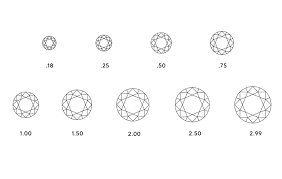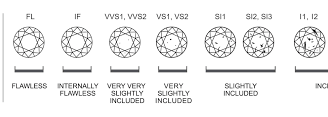Diamond 4C
Blog post description.
4/8/20242 min read
The 4Cs of diamonds are the four most important characteristics used to evaluate the quality and value of a diamond. These four characteristics are: carat, color, clarity, and cut.
Carat
Carat weight refers to the weight of a diamond in carats. One carat is equal to 200 milligrams, or 0.2 grams. Carat is the most objective and easily measurable of the 4Cs, and it is often used as a shorthand way to describe the size of a diamond. However, it is important to note that carat weight is not the only factor that determines the size of a diamond. The shape and cut of a diamond can also affect its apparent size.
Color
Color is the second most important factor in determining the value of a diamond. The less color a diamond has, the more valuable it is. Diamonds are graded on a scale from D to Z, with D being the highest grade (colorless) and Z being the lowest grade (light yellow or brown). The vast majority of diamonds fall in the near-colorless range ( grades D-G).
Clarity
Clarity refers to the number and size of inclusions (imperfections) in a diamond. Inclusions can be anything from tiny crystals to cracks to feathers. The fewer inclusions a diamond has, the more valuable it is. Diamonds are graded on a scale from F (flawless) to I3 (included), with F being the highest grade (no inclusions visible to the naked eye) and I3 being the lowest grade (inclusions that are visible to the naked eye).
Cut
Cut refers to the way a diamond has been cut and polished. The cut of a diamond affects its brilliance, fire, and scintillation. Brilliance is the amount of white light reflected from a diamond, fire is the amount of colored light dispersed by a diamond, and scintillation is the amount of sparkle a diamond produces. The cut of a diamond is graded on a scale from Excellent to Poor, with Excellent being the highest grade (optimal proportions and symmetry) and Poor being the lowest grade (poor proportions and symmetry).




